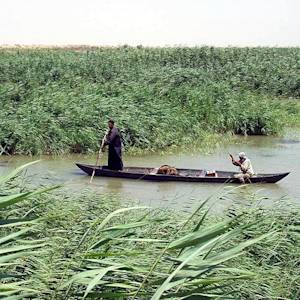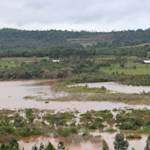Indus River Delta
2023 CE • Pakistan
"Originating high on the Tibetan Plateau, the Indus River flows more than 3,000km before emptying into the Arabian Sea. It is here where the fan-shaped delta forms an extensive system of swamps, mudflats, creeks, estuaries, marshes and mangroves forests. The Indus River Delta is an important region for migrating water birds, and is an area rich in fish, including giant snakehead," Indus baril, Indus garua, and Rita catfish. "It is also home to one of the few species of freshwater dolphin, the Indus river dolphin . . . Dams along the river reduce flows, particularly in lower parts of the Indus River, limiting the transport of much-needed fertile sediments downstream into the delta. They also fragment freshwater habitat, posing a serious threat to the survival of the river dolphin and other species. Water extraction for irrigation, runoff of chemicals into the river and introduced species also threaten the delta's freshwater species."
"Delta diversity," World Wildlife Fund.
Image: Public domain


Learn about Maya Lin’s fifth and final memorial: a multi-platform science based artwork that presents an ecological history of our world - past, present, and future.

Discover ecological histories and stories of former abundance, loss, and recovery on the map of memory.

Learn how we can reduce our emissions and protect and restore species and habitats – around the world.

See how art can help us rethink the problems we face, and give us hope that each one of us can make a difference.

Help make a global memorial something personal and close to home. Share your stories of the natural world.


